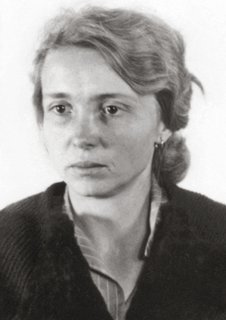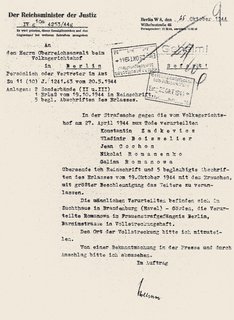Galina Romanova
In the early years of the war, the doctor and Berlin University lecturer Georg Groscurth, the physical chemist Robert Havemann, the architect Herbert Richter, and the dentist Paul Rentsch attempted to help persecuted people. In 1943, they made contact with forced laborers through the Russian exile Konstantin Shadkevitch. They supported their attempts to set up resistance organizations. Shadkevitch brought together French, Belgian, Czech, and Ukrainian laborers. In camps in Wildau and Oranienburg, Galina Romanova helped Soviet forced laborers. Shadkevitch put her in contact with Groscurth.
Havemann, Groscurth, Richter, and Rentsch named their group European Union. They regarded their common fight together with forced laborers from many European nations against the National Socialist regime as the basis for a postwar pan-European socialist order. The group was discovered by the Gestapo in the fall of 1943.
During 1943/44, the “People’s Court” sentenced fourteen members of the group to death in several trials. Others lost their lives during the preliminary investigations, were murdered in Auschwitz concentration camp, died in prison, or perished after liberation due to the consequences of their imprisonment.
Galina Romanova was born near Dnepropetrovsk in 1918. She studied medicine. On July 1, 1942, she was deported to Germany, where she worked as a doctor in forced labor camps. She was arrested for her activities with the European Union group on October 6, 1943, sentenced to death on April 27, 1944, and beheaded in Plötzensee prison on November 3, 1944.


